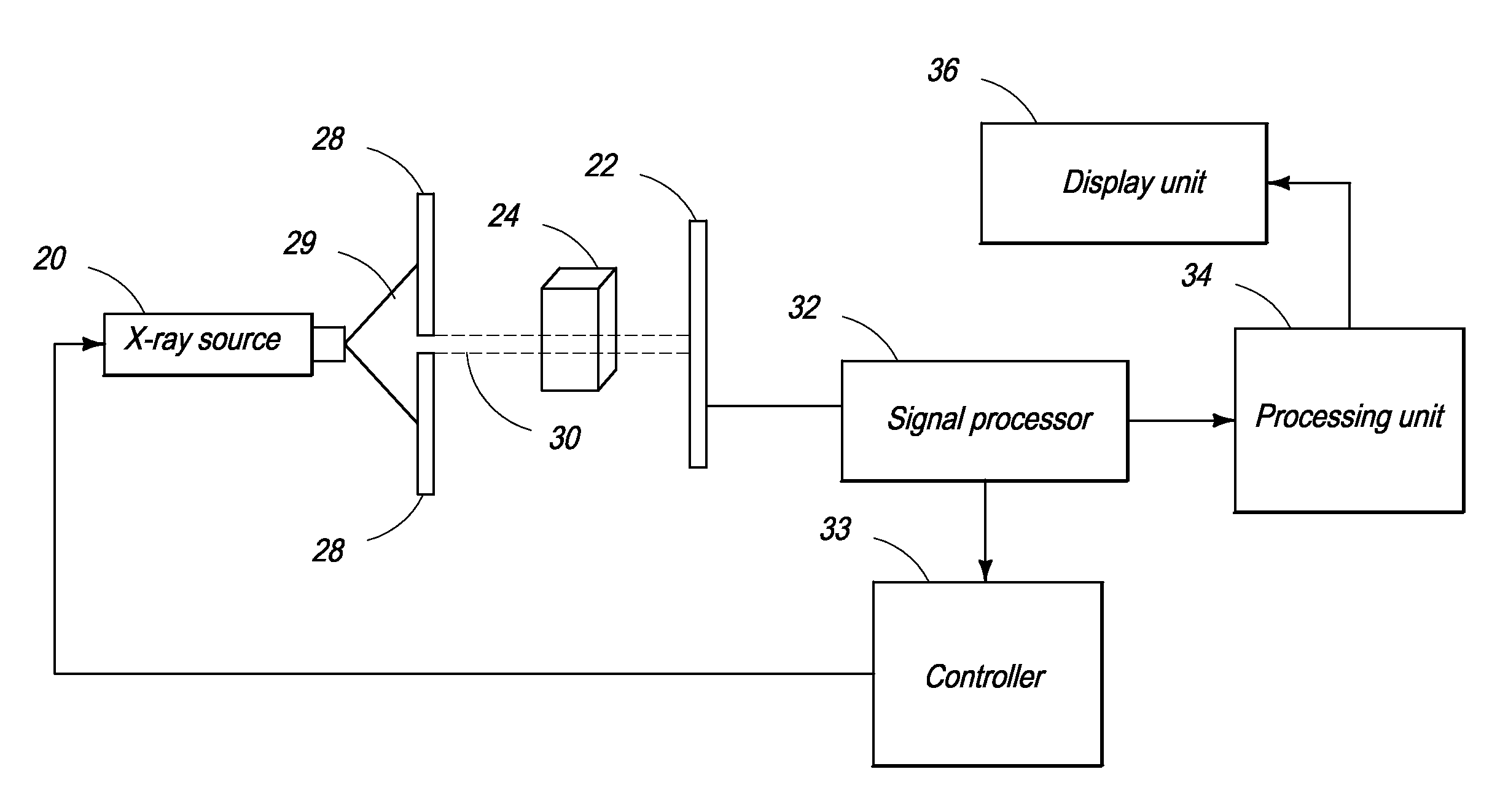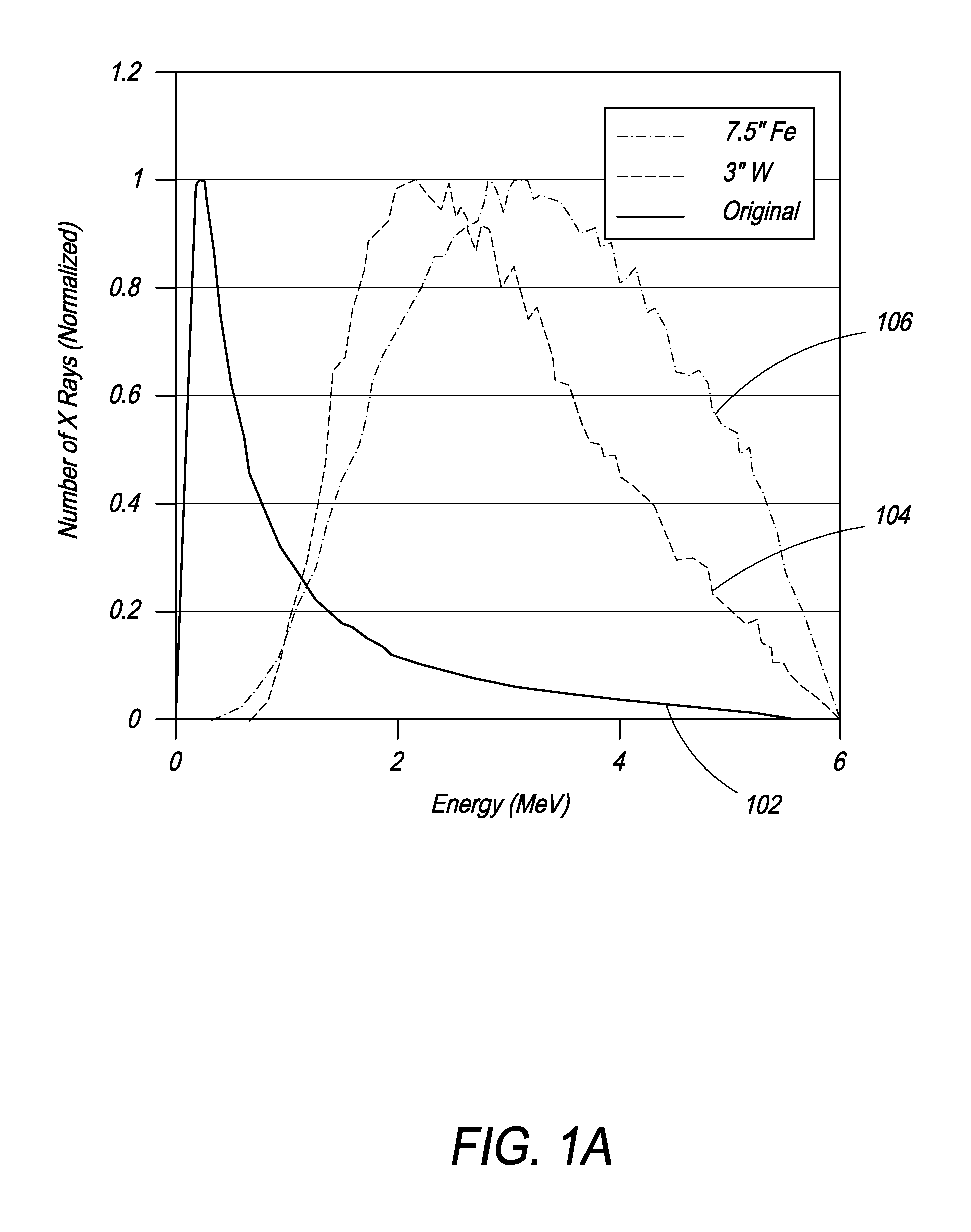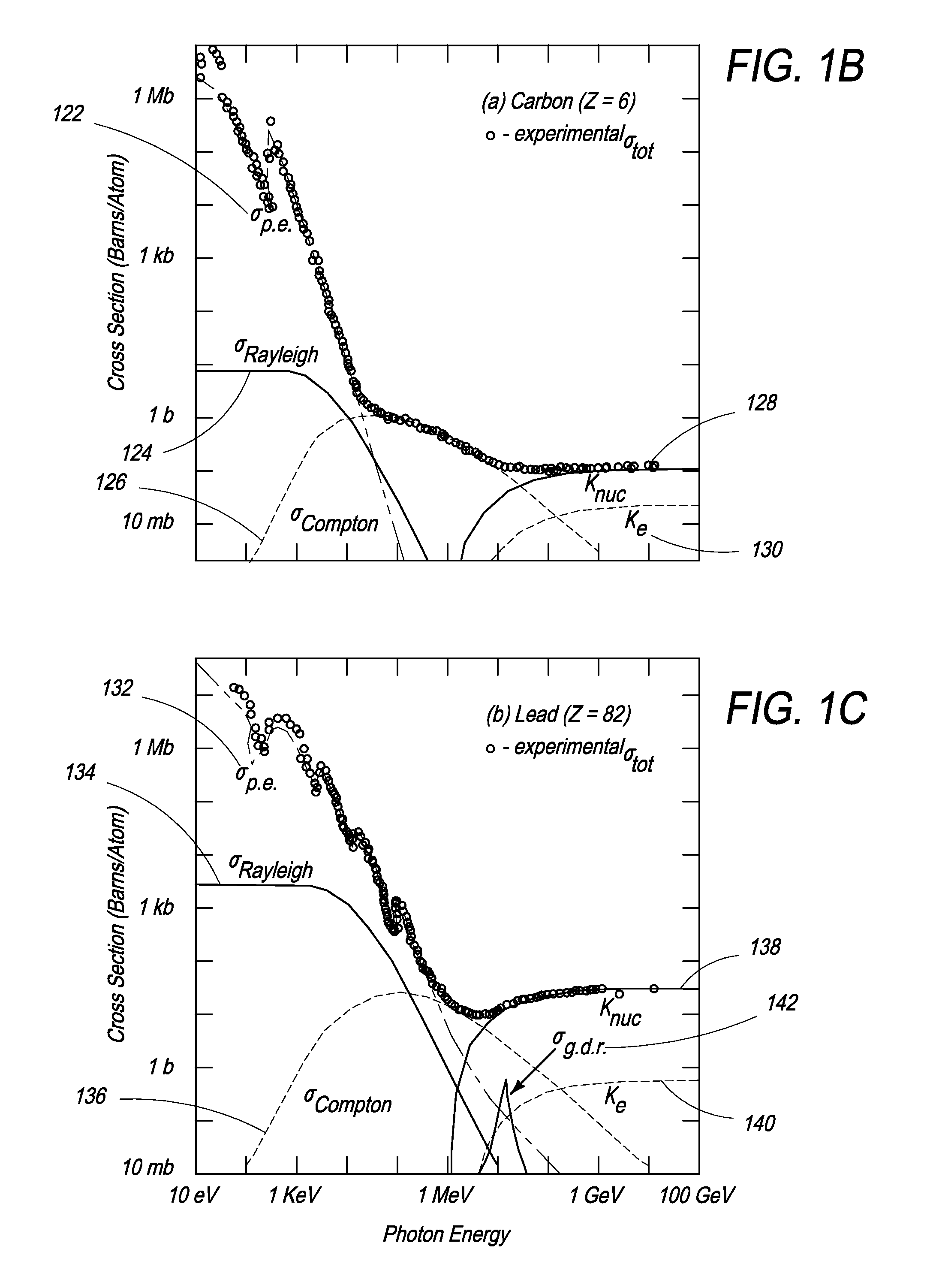Method and System for Extracting Spectroscopic Information from Images and Waveforms
a technology of spectroscopic information and waveforms, applied in the field of security systems, can solve the problems of high-energy x-rays that cannot x-ray count rates are usually too high to be measured using standard spectroscopy methods, and the scintillation detectors usually employed in conventional x-ray scanning systems are much too slow
- Summary
- Abstract
- Description
- Claims
- Application Information
AI Technical Summary
Benefits of technology
Problems solved by technology
Method used
Image
Examples
first embodiment
[0081]In a first embodiment, the present invention provides an Image-Based Noise Spectroscopy (IBNS) method to obtain spectral information indirectly by analyzing statistical fluctuations (i.e. “noise”) in a radiographic image obtained after passage of X-rays through a material being scanned. The spectral information is then interpreted to determine the atomic number, and in one embodiment, whether the material being scanned has a high atomic number or a low atomic number. In IBNS, the principle of the present invention is reflected in the fluctuations around the mean of the transmissions measured in adjoining pixels belonging to the same object. It is observed that after passing through materials having a high atomic number the fluctuations will be smaller than after passing through materials having a low atomic number.
[0082]In one example, in order to demonstrate an analysis of statistical fluctuations (i.e. “noise”) in a radiographic image obtained after passage of X-rays through...
second embodiment
[0102]In a second embodiment, the present invention provides an Electronics-Based Noise Spectroscopy (EBNS) method to obtain improved spectral information by applying detection techniques which use X-ray detectors that have a fast response time compared to the X-ray pulse duration, such as fast scintillators (e.g. plastic scintillator, LYSO, LaBr3, or other fast scintillators) or fast solid-state detectors (e.g., CZT, or TlBr, or other fast semiconductor-based X-ray detectors), and fast Analog-to-Digital Converters (ADCs) to analyze statistical fluctuations in the signal as it arrives during an X-ray pulse. In EBNS, the principle of the present invention is reflected in the shape of the signal waveform during each X-ray pulse. Each waveform sample during the pulse may be considered a “sub-pixel” of a pixel in the image. By using advanced electronics to measure both the waveform mean and its spread during each pulse, the presence of material having a high atomic number is positively ...
PUM
 Login to View More
Login to View More Abstract
Description
Claims
Application Information
 Login to View More
Login to View More - Generate Ideas
- Intellectual Property
- Life Sciences
- Materials
- Tech Scout
- Unparalleled Data Quality
- Higher Quality Content
- 60% Fewer Hallucinations
Browse by: Latest US Patents, China's latest patents, Technical Efficacy Thesaurus, Application Domain, Technology Topic, Popular Technical Reports.
© 2025 PatSnap. All rights reserved.Legal|Privacy policy|Modern Slavery Act Transparency Statement|Sitemap|About US| Contact US: help@patsnap.com



